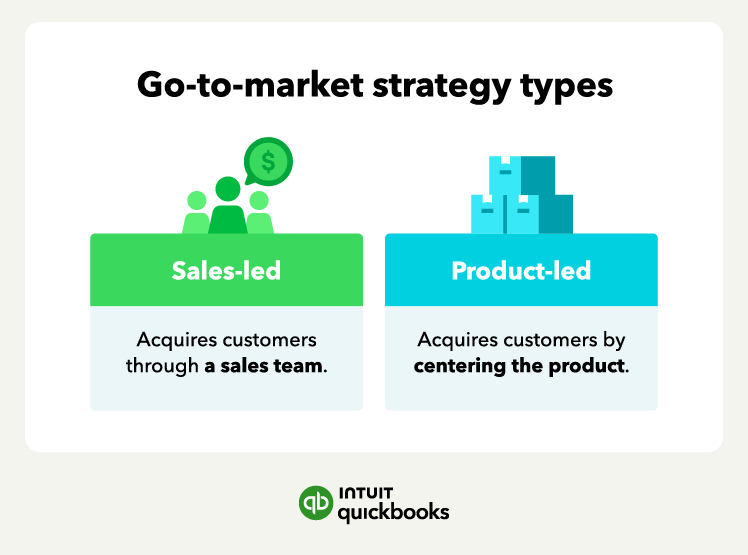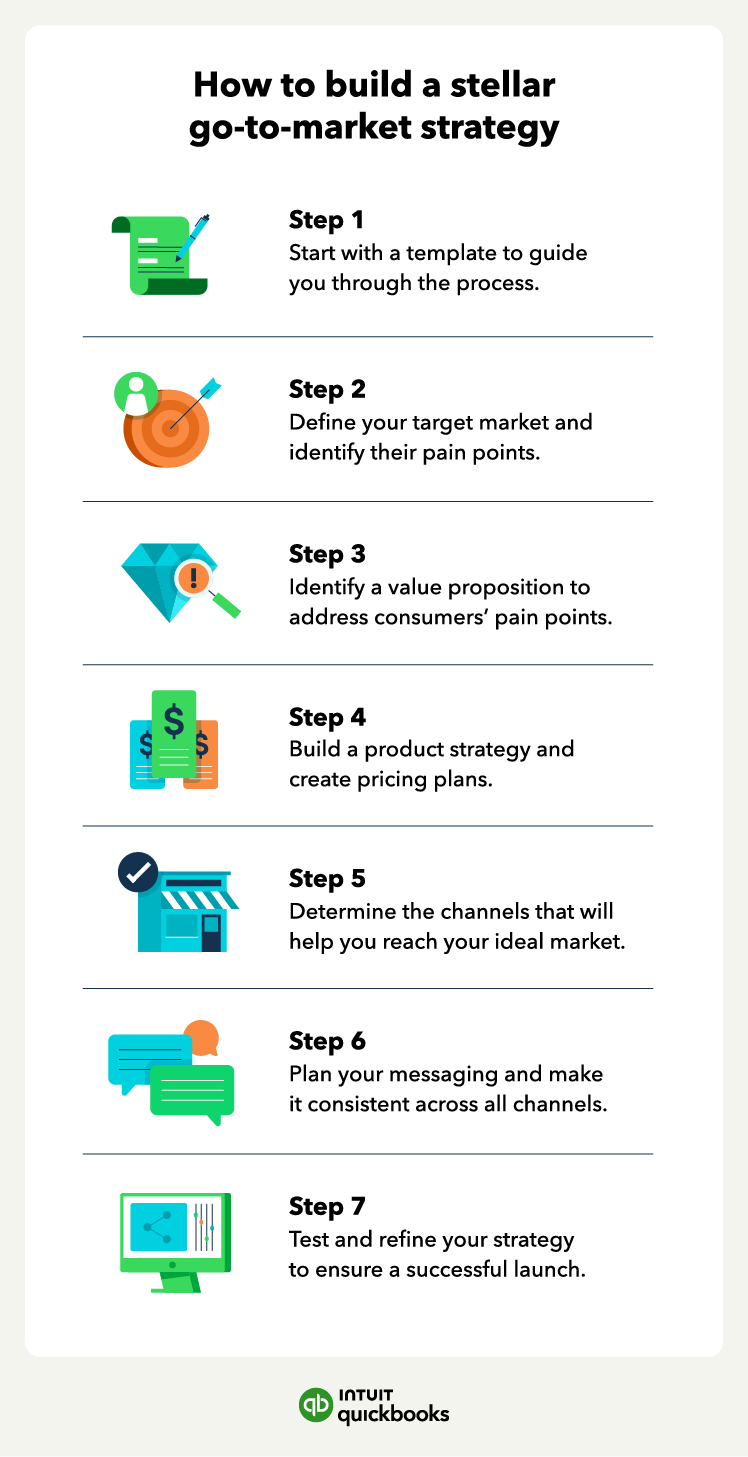2. Define the market
Before crafting a successful go-to-market strategy, you need to first define your target audience. Research your ideal customer for your new product with market segmentation, a marketing strategy that helps you identify which product is appropriate for each group of people.
Then you can build buyer personas by identifying:
- Their age
- Where they live
- What jobs they hold
- What spending power they have
- What’s an urgent and important problem they have
Next, determine whether those customers are already part of your customer base or whether you have yet to reach them. If you need to discover new customers, you’ll also need to determine how to reach them.
Also, consider what your competitors are offering and which market they are targeting, and figure out how you can differentiate from them.
3. Identify your value proposition
The next step is to identify your value proposition—also known as your unique selling proposition. This is what you promise to deliver to your customers and how you’re going to solve their problems.
To find your value proposition, first assess the benefits of your product or service, then determine the possible solutions that those advantages offer your target market.
The goal in defining your value proposition is to think like the customer. Ask yourself what problems or challenges in your life need solving. Once you do this, you can figure out how customers will use your products to meet their needs, and you can align your marketing efforts accordingly.
4. Build your product strategy
Another important part of your go-to-market strategy involves identifying which products to sell and determining how you will position your brand. In most cases, you’ll want to create a unique product strategy for every one of your target markets.
When building your product strategy, consider:
- Building a pricing strategy
- Setting promotions
- Specifying bundling plans.
- Differentiating from your competitors
Remember, your strategies may need to shift based on customer reactions. You want to stay in tune with their reactions to make small adjustments to the go-to-market strategy as needed. For example, you can monitor social media to help gauge customer reactions to a new product or service.
5. Determine your channels
The next step is to identify your ideal marketing channels. Marketing channels are the places where you promote and sell your products. Once you determine your target market, you can identify where this group tends to shop.
Some examples of channels include:
Your marketing channels will vary based on your target market. Whatever channel you select, it’s important to put sufficient time into developing your brand and ensuring it’s consistent. The goal is for customers to have consistent experiences no matter where and when they purchase your goods.
6. Consider your messaging
If you’re looking to get the word out about your new product or service, you may want to consider crafting an external marketing plan. External marketing can increase the likelihood of customers hearing about your product.
You’ll want to ensure your message is consistent across your external marketing content. One of the best ways to do so is to identify who you are as a brand and ask yourself these questions:
- Who are you?
- What language would you use to describe your company and your new product?
- How will you ensure your new product is consistent with your current brand?
You may need print or online ads to begin garnering attention for your new product. Besides market research, marketing will likely make up much of your go-to-market strategy.
7. Test and measure your strategy
Determining the objectives of your go-to-market strategy before launch will make it easier to measure success down the line. Once you launch your product, measure the effectiveness of your strategy and find areas for improvement.
You can, for example, start small by targeting one marketing channel and getting customer feedback. Then, you can optimize your strategy to focus on what works for your business and product.
Creating an incredible product is only the first step. A successful company finds ways of putting its goods into the hands of its target audiences. By considering all the elements of your go-to-market strategy—including who you will target and how and where you will reach these individuals—you can give your business the best chance of going the distance.
Best practices when creating a go-to-market strategy
Creating a go-to-market strategy requires a lot of time and research. But when you do it right, it can lead to a successful product launch and help your business grow.
Here are some best practices to follow when implementing a go-to-market strategy:
- Support your current customers: Prepare to support current customers after a product launch and help troubleshoot issues. Providing effective support is an excellent way to keep customers happy.
- Improve your strategy as you go: Consistently keep track of your product or service’s performance, and find ways to optimize it. Understand what’s blocking customers from purchasing or even looki at new markets.
- Strengthen customer relationships: Keep your current customers by nurturing your relationships with them. Provide stellar support and personalized experiences, and solve their problems.
- Minimize costs: Find cheaper ways to bring in new customers to minimize costs. Consider different advertising channels and focus on organic traffic.
It’s important to keep in mind that using a go-to marketing strategy doesn’t necessarily mean your product or service will succeed in the market. You have to test and improve your strategy to lead you to the right market and strategy.
Run your business with confidence
Using a go-to-market strategy template and taking the time to craft it could increase the likelihood of success when introducing a new product or service to your business model.
To keep track of your business profits and expenses, you’re going to want reliable financial software. QuickBooks helps you streamline your business’s finances and keep everything connected in one place.













